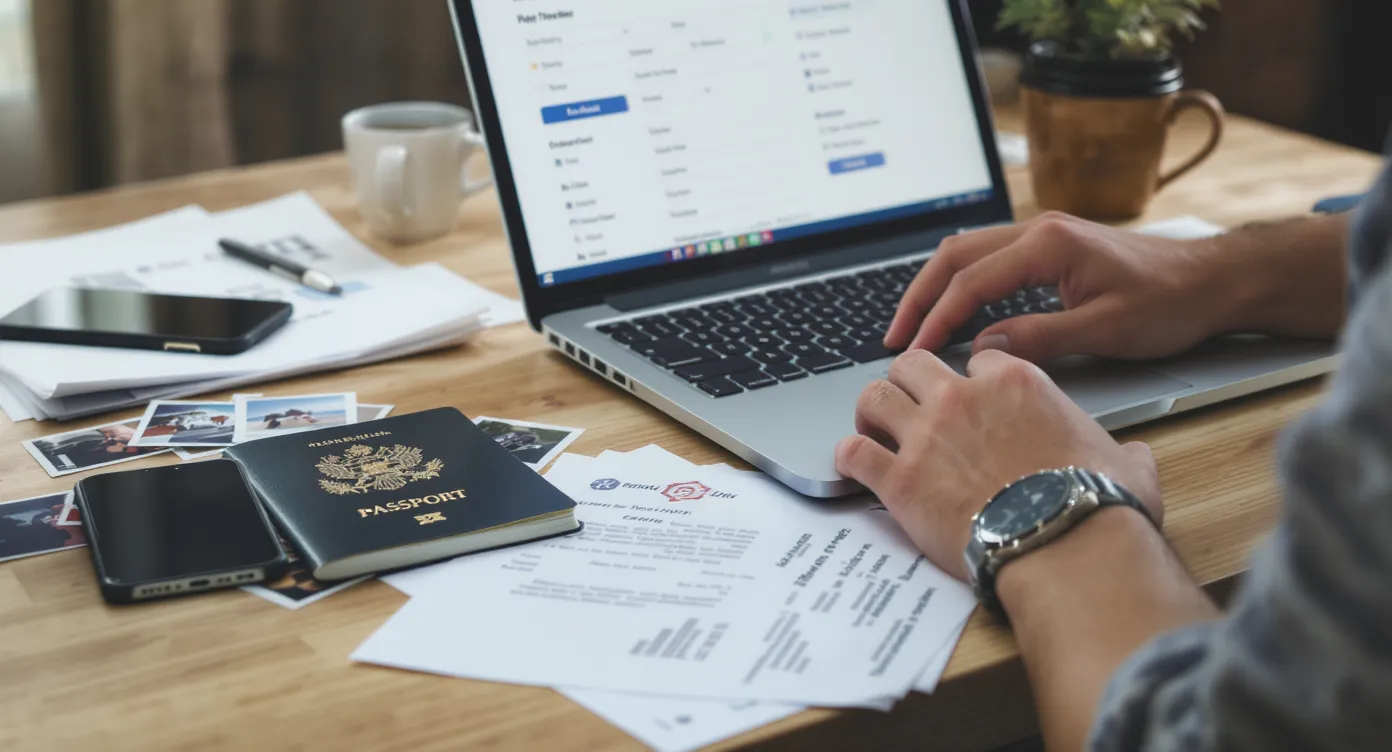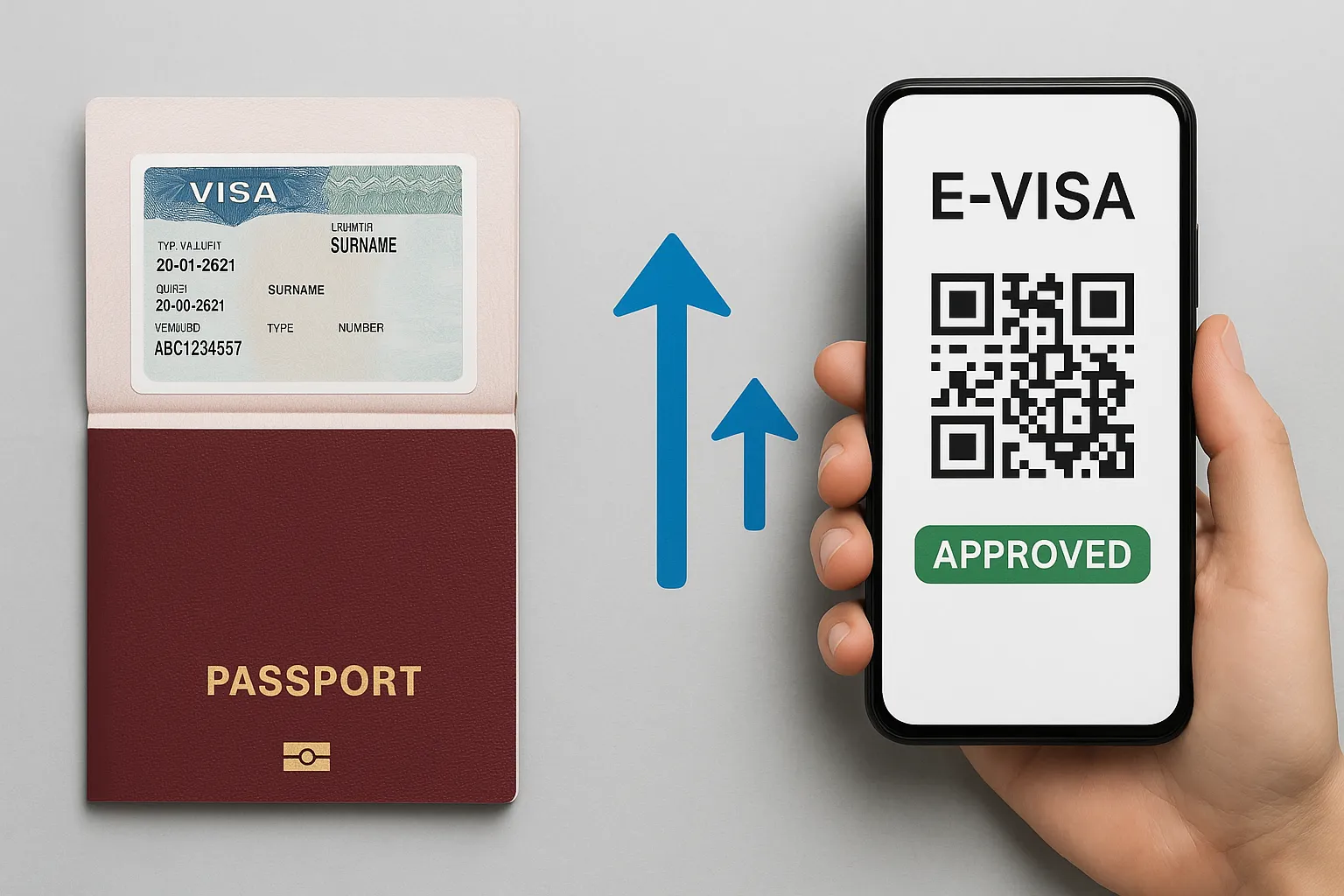Tourist Visa Basics: Requirements, Costs, Processing Times

Applying for a tourist visa can feel like deciphering a secret code when all you want to do is book a flight and start planning activities. Rules, fees and timelines vary by destination, yet most countries follow a remarkably similar checklist. By understanding the fundamentals, you can avoid common mistakes, budget accurately and time your application so the visa is in hand well before wheels-up.
What Is a Tourist Visa?
A tourist visa (sometimes called a visitor visa or short-stay visa) is an official authorization that allows foreign nationals to enter a country for leisure, sightseeing or visiting family and friends, without engaging in paid work or long-term study. Some tourist visas are issued electronically (e-visas or eTAs), while others still rely on paper stickers placed inside your passport.
According to the UN World Tourism Organization, more than 55 percent of international arrivals in 2024 required some form of tourist visa or travel authorization.¹
Who Needs One—and Who Doesn’t?
- Visa-exempt travelers: Citizens of countries that have bilateral visa-waiver agreements (for example, Canadians visiting the European Schengen Area for up to 90 days) may enter without a traditional tourist visa, although a digital authorization such as ETIAS could still be required.
- Visa-required travelers: Everyone else must secure the appropriate visitor visa before departure. Airlines can deny boarding if the visa is missing or invalid.
Always check the official government source or a trusted visa partner like SimpleVisa for the latest rules; visa policies shift frequently due to security, health or diplomatic changes.
Core Requirements Most Embassies Ask For
While each country adds its own twist, the documents below appear on 90 percent of tourist-visa checklists SimpleVisa tracks across 70+ destinations:
| Requirement | Why It Matters | Typical Spec |
|---|---|---|
| Valid passport | Confirms identity and nationality | 6 months’ validity beyond exit date, ≥ 2 blank pages |
| Digital photo | Biometric comparison at the border | 35×45 mm or 2×2 in; neutral expression, plain background |
| Proof of itinerary | Demonstrates travel purpose and intent to leave | Round-trip ticket or onward ticket |
| Accommodation details | Confirms where you will stay | Hotel booking or invitation letter |
| Financial means | Shows you can fund the trip and won’t seek local work | Recent bank statements, payslips or credit-card limits |
| Ties to home country | Reduces overstay risk | Employment letter, enrollment certificate, property deeds |
| Travel insurance (select countries) | Guarantees ability to cover medical costs | Minimum coverage €30,000 in Schengen Area |
Failure to submit clear, legible scans or to meet sizing rules is the number-one reason tourist-visa applications end up in the rejection pile. For photo and file-format tips, see SimpleVisa’s guide to Electronic Visa Requirements.

How Much Does a Tourist Visa Cost in 2025?
Governments usually charge a non-refundable application fee and, in some cases, a biometrics fee or reciprocal issuance fee. Prices fluctuate with currency exchange and bilateral agreements, so treat the examples below as a snapshot rather than fixed rates.
| Country | Visa Type & Validity | Government Fee (USD) |
|---|---|---|
| United States (B-2) | Multiple entry, 10 years for many nationalities | $185 (MRV fee) |
| Schengen (Type C) | Up to 90 days in 180 | ~€80 adults / €40 ages 6–12 |
| India e-Tourist | 30 days, single entry | $10–$35 (seasonal pricing) |
| Australia ETA | 12 months, multiple 3-month visits | AU $20 (~$13) processing charge |
| Kenya eVisa | 90 days, single entry | $51 |
| Brazil eVisa (reintroduced 2025) | 90 days, multiple entry | $80 + $4.24 service fee |
Source: official immigration portals accessed November 2025.
Budget not only for the government fee but also for:
- Courier costs (if passports must be mailed)
- Attestation or translation of documents
- On-site biometrics at Visa Application Centres (VACs)
- Optional priority processing or SMS updates
Typical Processing Times—and What Affects Them
Processing clocks start after you submit a complete application and pay. SimpleVisa’s 2025 benchmarking study across 30 popular destinations shows:
| Processing Category | Average Calendar Days |
|---|---|
| Super-fast e-visas (fully automated) | 15 minutes – 48 hours |
| Standard e-visas | 3 – 7 days |
| Embassy/consulate tourist visas | 10 – 25 days |
| Peak-season embassy visas (July–August, Dec–Jan) | 20 – 45 days |
Factors that can speed up or slow down approval:
- Application accuracy – typos trigger manual review.
- Nationality-based screening – some passports face extra vetting.
- Travel history – previous overstays or mismatching stamps raise red flags.
- Security or public-health alerts – pandemics, conflicts or large events add scrutiny.
- Holiday closures – embassies observe both local and home-country holidays.
For destinations with strict seasonal quotas—think Japan’s cherry-blossom rush or Christmas in Europe—apply as soon as the embassy calendar opens, usually 90–180 days before departure. SimpleVisa’s article on 10 Tips for a Smooth Electronic Visa Application Process includes a month-by-month planning worksheet.
Paper Sticker vs. Electronic Tourist Visa
| Feature | Paper Sticker | Electronic (eVisa/eTA) |
|---|---|---|
| How to apply | In person or via VAC | 100 percent online |
| Passport submission | Required | Not required (scan only) |
| Processing speed | Days – weeks | Minutes – days |
| Delivery | Physical passport returned | Approval PDF emailed |
| Entry proof | Border officer views visa page | Officer scans passport; e-visa auto-appears |
| Risk of damage/loss | High (passport in transit) | Low (digital copy retrievable) |
Electronic systems are expanding quickly: the International Air Transport Association projects that 80 percent of leisure visas will be digital by 2030.² If your destination offers an e-tourist visa, it is almost always faster and cheaper than the paper route.

Five Ways to Boost Your Approval Odds
- Use consistent data everywhere: Your flight booking, hotel confirmation and visa form should spell your name exactly as it appears on your passport.
- Scan in color at 300 dpi: Grainy or cropped documents are prime candidates for rejection.
- Explain unusual circumstances upfront: Previous overstays, dual citizenship or a new passport? Include a short cover letter and supporting evidence.
- Pay with an internationally enabled card: Transactions sometimes fail on local-currency sites; enable 3-D Secure and notify your bank.
- Track your application daily: If the portal requests extra documents, respond within 48 hours to avoid automatic refusal.
More insider tips are available in SimpleVisa’s guide to Visa Processing: 4 Efficient and Successful Tips.
Where SimpleVisa Fits In
For travelers, SimpleVisa’s white-label app and hundreds of partner websites surface the exact tourist-visa rules for your passport inside the booking flow, then walk you through a guided application with built-in photo cropping, document validation and real-time status alerts.
For airlines, OTAs and tour operators, SimpleVisa’s API delivers up-to-date requirements and automated form submission so customers complete their visa alongside the flight, boosting ancillary revenue and cutting denied-boarding costs. Learn more on the SimpleVisa homepage.
Key Takeaways
- Start gathering documents 2–3 months before departure; earlier for peak seasons.
- Expect government fees from $10 to $185, plus possible service charges.
- Electronic tourist visas are overtaking paper stickers thanks to faster turnaround and lower cost.
- Accuracy, financial proof and itinerary coherence remain the pillars of approval.
- Tools like SimpleVisa can automate checks, reduce errors and keep both travelers and travel brands compliant.
By mastering the basics—requirements, costs and processing timelines—you transform visa paperwork from a stress factor into a predictable line item in your travel plan. That leaves you free to focus on what actually matters: enjoying the destination.
¹ UNWTO “International Tourism Highlights 2024” report.
² IATA Passenger Facilitation Conference briefing, April 2025.